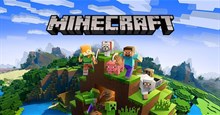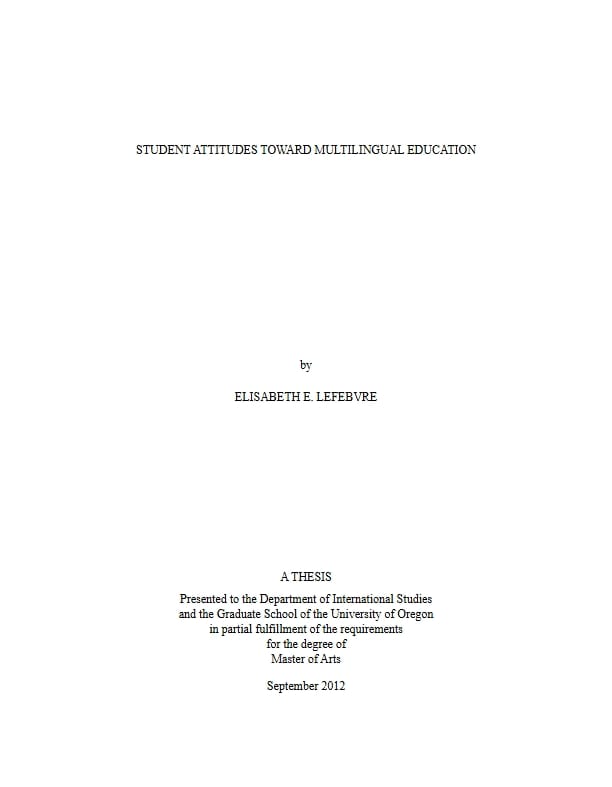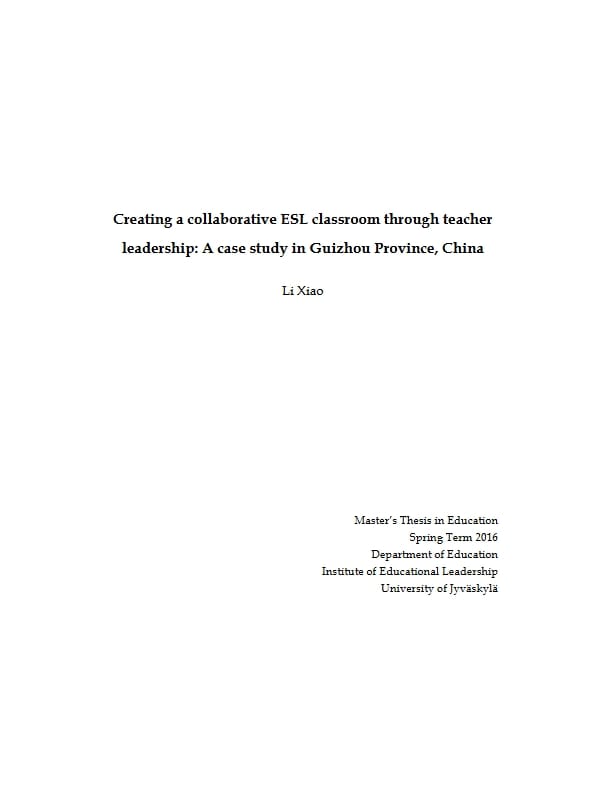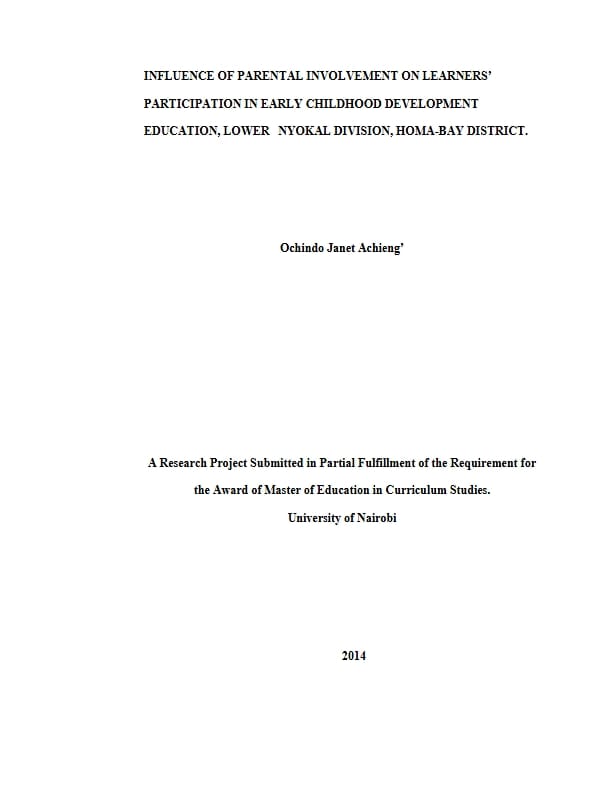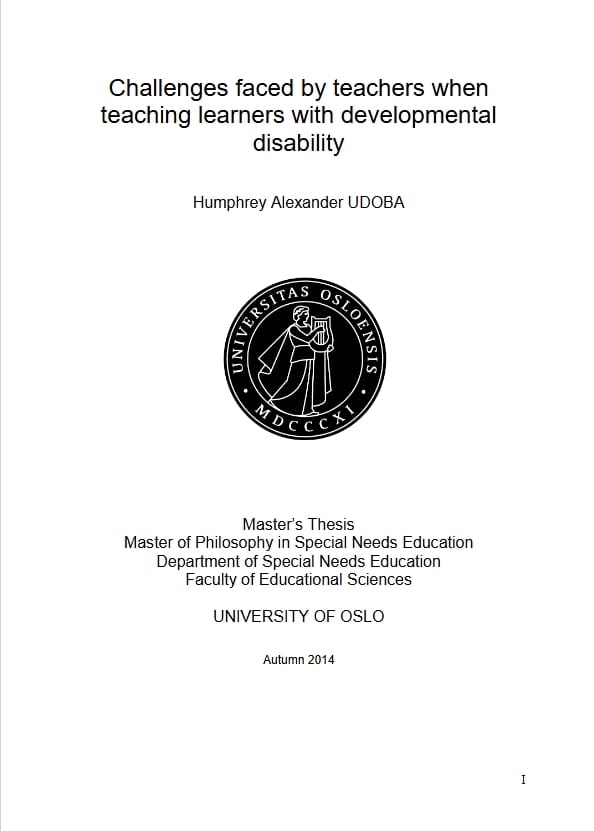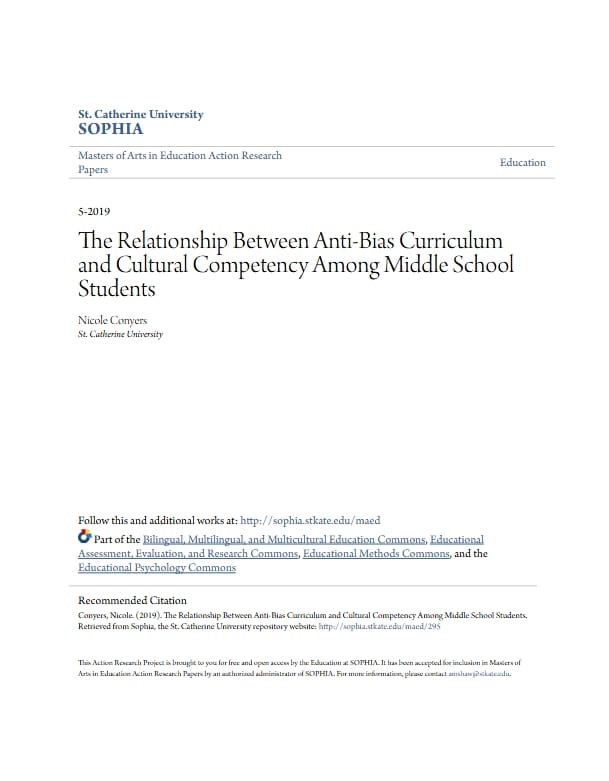Table of Contents
1.0 Introduction ……………………………………………………………………………………………………… 3
1.1 Background …………………………………………………………………………………………………… 4
1.2 The aims and scope of the present study …………………………………………………………… 4
1.3 Outline of the thesis ……………………………………………………………………………………….. 5
2.0 English teaching in Norwegian school education ………………………………………………….. 7
2.1 Introduction ………………………………………………………………………………………………….. 7
2.2 An historical overview of English curricula in Norway ………………………………………. 7
2.3 The Knowledge Promotion curriculum (LK06) …………………………………………………. 9
2.4 The textbook tradition in Norway ………………………………………………………………….. 12
2.5 Teacher education ………………………………………………………………………………………… 13
3.0 Theory and literature review …………………………………………………………………………….. 15
3.1 The background for CLIL……………………………………………………………………………… 15
3.2 The nature of CLIL ………………………………………………………………………………………. 17
3.3 Theories of language learning ……………………………………………………………………….. 20
3.3.1 Socio-cultural, constructivist perspectives on language learning …………………. 21
3.3.2 The ‘natural approach’ …………………………………………………………………………… 22
3.3.3 Krashen’s Monitor theory ………………………………………………………………………. 22
3.3.4 ‘Natural’ language learning and CLIL ……………………………………………………… 25
3.4 Studies of CLIL …………………………………………………………………………………………… 26
4.0 Method ………………………………………………………………………………………………………….. 37
4.1 Introduction ………………………………………………………………………………………………… 37
4.2 The case study: an approach to qualitative research ………………………………………….. 37
4.3 Risks of bias and validity………………………………………………………………………………. 38
4.4 The participants and gaining entry into the field ………………………………………………. 39
4.5 Observation …………………………………………………………………………………………………. 40
4.5.1 Semi-structured observation ……………………………………………………………………. 40
4.5.2 The case study observation …………………………………………………………………….. 41
4.6 Interviews …………………………………………………………………………………………………… 42
4.6.1 Semi-structured interviews ……………………………………………………………………… 42
4.6.2 The pre-project teacher interview ……………………………………………………………. 43
4.6.3 The post-project interview with the teacher ………………………………………………. 44
4.6.4 Interviews with the pupils ………………………………………………………………………. 45
4.7 Questionnaires …………………………………………………………………………………………….. 47
4.7.1 The pre-project questionnaire ………………………………………………………………….. 48
4.7.2 The post-project questionnaire ………………………………………………………………… 49
4.8 Presenting the data ……………………………………………………………………………………….. 50
5.0 Results …………………………………………………………………………………………………………… 51
5.1 Pre-project data ……………………………………………………………………………………………. 51
5.1.1 Pre-project teacher interview…………………………………………………………………… 51
5.1.2 Pre-project pupil questionnaire ……………………………………………………………….. 61
5.2 Observation data ………………………………………………………………………………………….. 63
5.2.1 Summary of observation data ………………………………………………………………….. 63
5.2.2 Pupils’ oral presentations ……………………………………………………………………….. 70
5.3 Post-project data ………………………………………………………………………………………….. 74
5.3.1 Post-project pupil questionnaire ………………………………………………………………. 74
5.3.2 Post-project pupil interviews …………………………………………………………………… 77
5.3.3 Post-project teacher interview …………………………………………………………………. 83
6.0 Discussion ……………………………………………………………………………………………………… 92
6.1 The teacher’s motives …………………………………………………………………………………… 92
6.2 Expectations………………………………………………………………………………………………… 93
6.3 Experiences …………………………………………………………………………………………………. 94
6.4 The pupils’ benefits ……………………………………………………………………………………… 96
6.5 Challenges ………………………………………………………………………………………………….. 99
7.0 Conclusion ……………………………………………………………………………………………………. 102
References ……………………………………………………………………………………………………………… 104
Appendices …………………………………………………………………………………………………………….. 109
Appendix 1A……………………………………………………………………………………………………….. 109
Appendix 1B ……………………………………………………………………………………………………….. 111
Appendix 2A……………………………………………………………………………………………………….. 114
Appendix 2B ……………………………………………………………………………………………………….. 116
Appendix 3 …………………………………………………………………………………………………………. 118
Appendix 4 …………………………………………………………………………………………………………. 120






